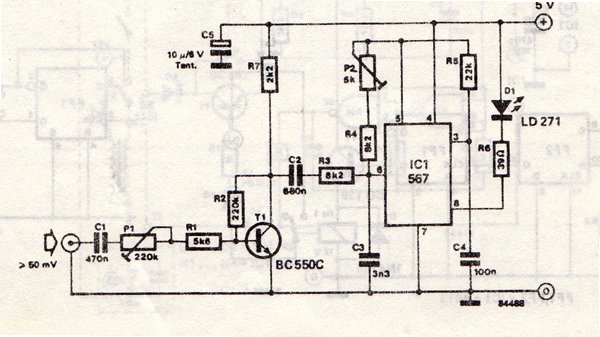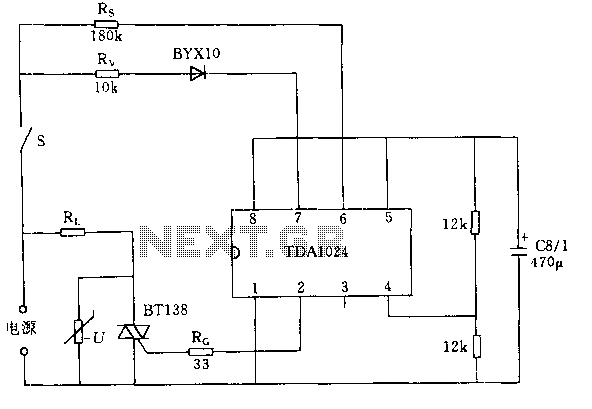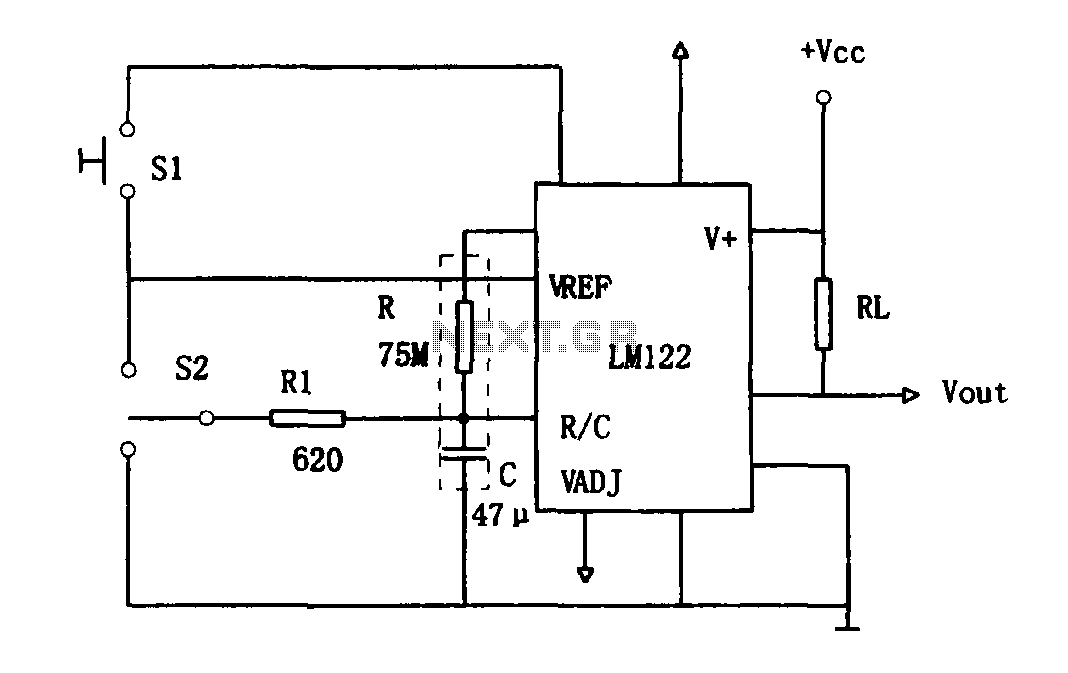
light sensor circuit

This is a sensor circuit designed for light detection. It utilizes the LM311 comparator and features a simple design. The comparator is powered by a 12 V DC supply and does not require a negative supply for efficient operation. Feedback is provided to the comparator to introduce some hysteresis, while a potentiometer allows for adjustment of the detector's sensitivity to darkness.
The circuit employs the LM311 comparator, which is a versatile device capable of functioning in various applications. The LM311 operates with a single positive supply voltage, making it suitable for battery-powered or low-voltage applications. The comparator compares the voltage from a light-dependent resistor (LDR) or photodiode with a reference voltage set by a voltage divider or potentiometer.
In this configuration, the LDR decreases its resistance in the presence of light, causing the voltage at the non-inverting input of the comparator to rise. When the light intensity falls below a certain threshold, the voltage at the inverting input exceeds that of the non-inverting input, causing the output of the comparator to switch states. This output can then be used to drive an indicator, such as an LED, or to trigger another circuit, such as a relay for controlling larger loads.
The feedback loop introduced to the comparator is essential for providing hysteresis, which prevents rapid switching of the output in response to small fluctuations in light levels. This hysteresis is crucial for creating a stable output and avoiding false triggering due to noise or minor changes in ambient light conditions. The potentiometer allows for fine-tuning of the sensitivity, enabling the user to set the threshold for light detection according to specific requirements.
Overall, this light-sensing circuit is straightforward to construct and can be applied in various applications, including automatic lighting systems, alarm systems, and energy-saving devices. The simplicity of the design, combined with the adjustable sensitivity, makes it a practical solution for detecting changes in light levels.This is a design sensor circuit that can be used for sensing the light. This circuit is using a comparator LM311. This circuit is very simple design. This is the figure of the circuit. This comparator is powered from 12 V DC supply and does not require negative supply to work efficiently. Feedback given to the comparator provides some hysteresis a nd the potentiometer allows to adjustment the sensitivity of the detector for darkness. 🔗 External reference
The circuit employs the LM311 comparator, which is a versatile device capable of functioning in various applications. The LM311 operates with a single positive supply voltage, making it suitable for battery-powered or low-voltage applications. The comparator compares the voltage from a light-dependent resistor (LDR) or photodiode with a reference voltage set by a voltage divider or potentiometer.
In this configuration, the LDR decreases its resistance in the presence of light, causing the voltage at the non-inverting input of the comparator to rise. When the light intensity falls below a certain threshold, the voltage at the inverting input exceeds that of the non-inverting input, causing the output of the comparator to switch states. This output can then be used to drive an indicator, such as an LED, or to trigger another circuit, such as a relay for controlling larger loads.
The feedback loop introduced to the comparator is essential for providing hysteresis, which prevents rapid switching of the output in response to small fluctuations in light levels. This hysteresis is crucial for creating a stable output and avoiding false triggering due to noise or minor changes in ambient light conditions. The potentiometer allows for fine-tuning of the sensitivity, enabling the user to set the threshold for light detection according to specific requirements.
Overall, this light-sensing circuit is straightforward to construct and can be applied in various applications, including automatic lighting systems, alarm systems, and energy-saving devices. The simplicity of the design, combined with the adjustable sensitivity, makes it a practical solution for detecting changes in light levels.This is a design sensor circuit that can be used for sensing the light. This circuit is using a comparator LM311. This circuit is very simple design. This is the figure of the circuit. This comparator is powered from 12 V DC supply and does not require negative supply to work efficiently. Feedback given to the comparator provides some hysteresis a nd the potentiometer allows to adjustment the sensitivity of the detector for darkness. 🔗 External reference





